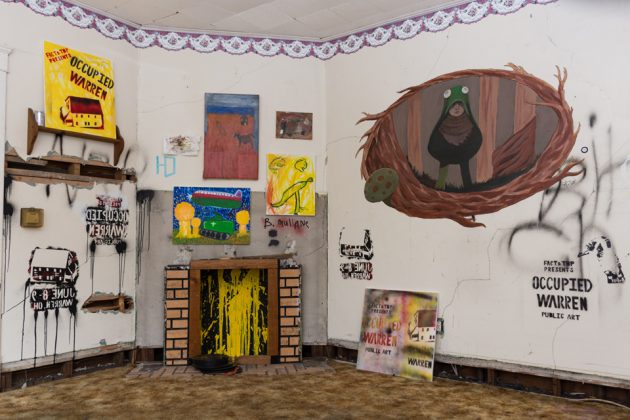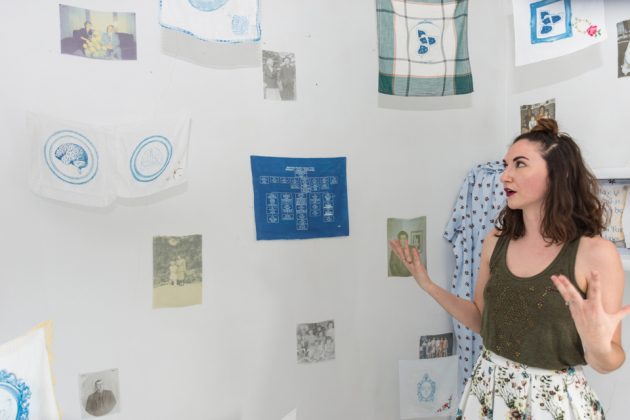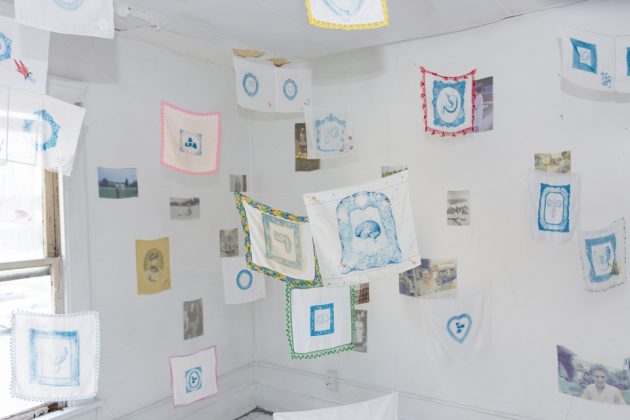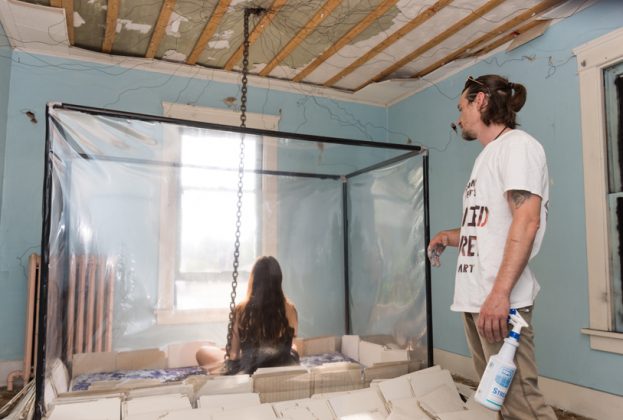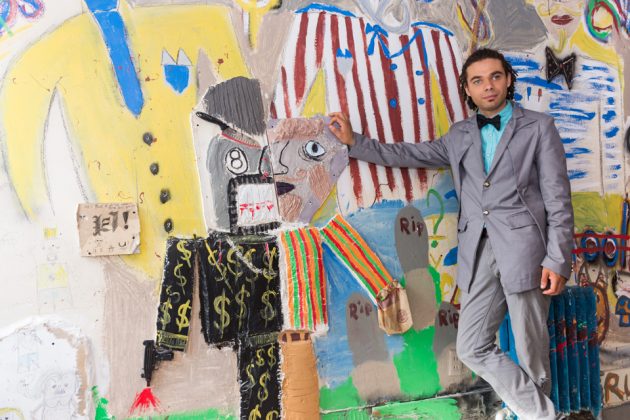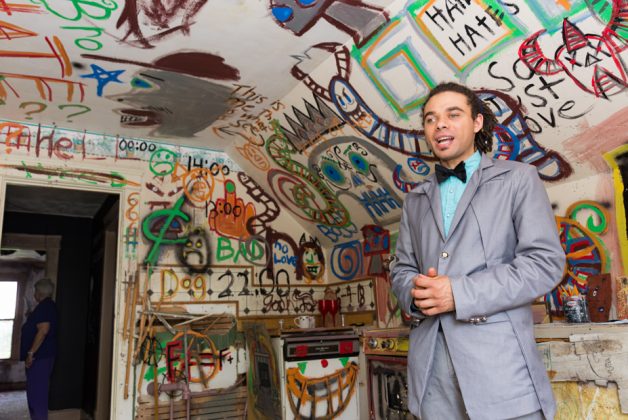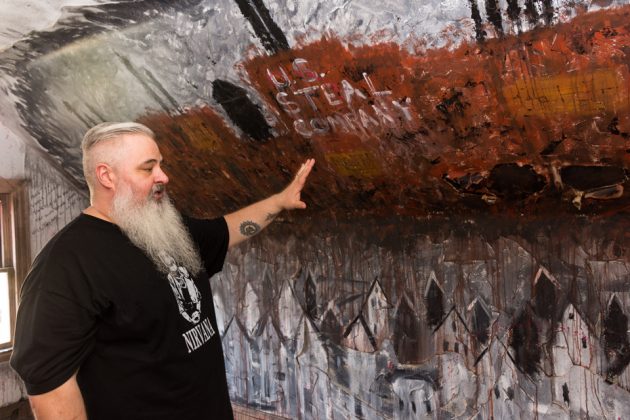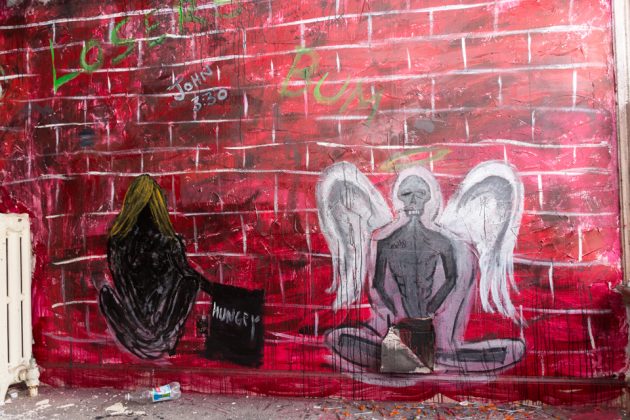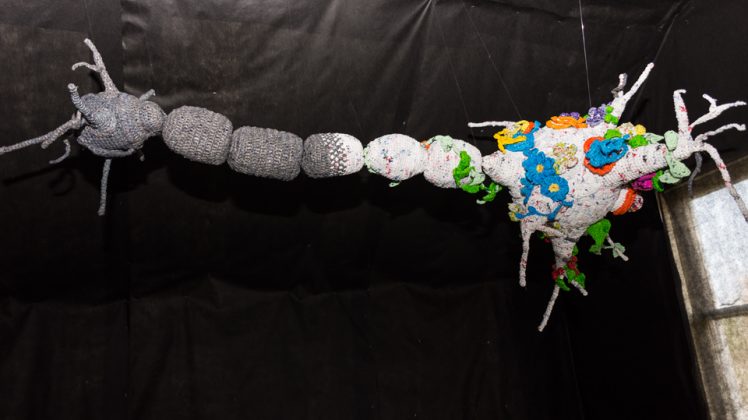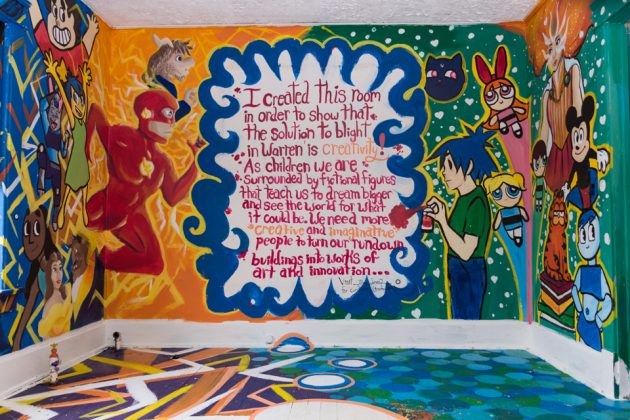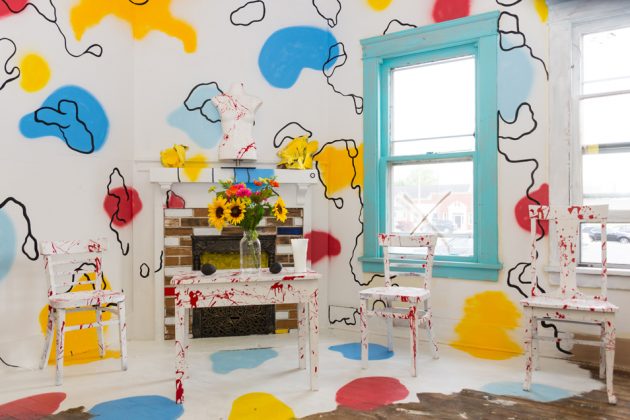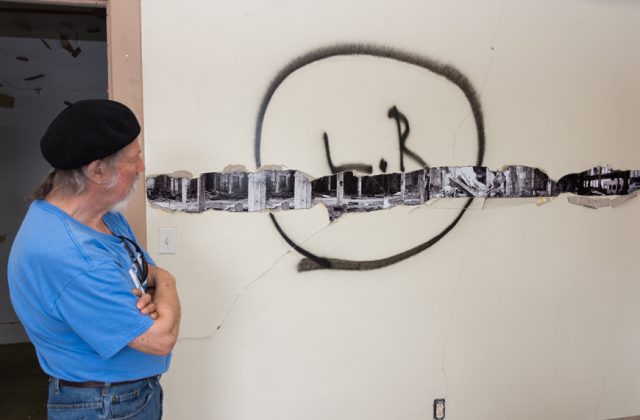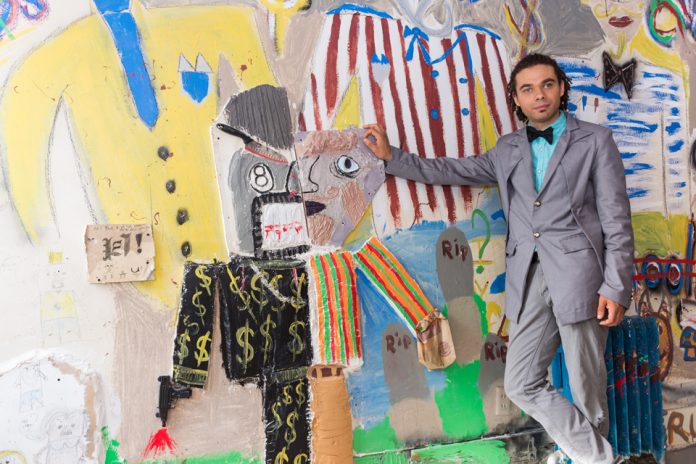
Before being torn down, an abandoned house in Warren has been occupied one last time to host an art exhibition on June 8 and 9.
“Occupied Warren” is a temporary exhibition presented by the Fine Arts Council of Trumbull County and Trumbull Neighborhood Partnership.
The vacant house, located at 232 Vine Ave. N.E., features installations from 22 different artists spread out across all three floors of the building.
James Shuttic, president of the Fine Arts Council of Trumbull County, a participating artist and “Occupied Warren” curator, said that the idea behind the exhibition was to allow artists to create works in multiple mediums in a three-story abandoned house.
Shuttic said artists explored the themes of abandonment, blight and revitalization in any medium they desired. Artists could also tell stories about the community through their work. He said that the artists dealt with a variety of subject matter and also interpreted local and national issues.
Shuttic said that the house is going to be razed eventually and some of the installations will be torn down with it.
With that in mind, organizers made the exhibition a two-day event for a total of seven hours.
“It highlights the importance of some of the issues that they’re talking about being that there’s a limited amount of time,” Shuttic said. “We wanted to give the sense of urgency to the public. You either see it in a short amount of time or else.”
Lisa Ramsey, deputy director of Trumbull Neighborhood Partnership, said the event was funded through a grant from the Ohio Arts Council.
Ramsey said that Trumbull Neighborhood Partnership saw a unique opportunity to co-sponsor a project like “Occupied Warren.”
“We have a lot of temporary challenges in the community with the houses being demolished and a lot of the issues that come along with years of blight and vacancy,” she said. “But we also see an opportunity to celebrate the progress we’ve made.”
Bill Barron, an artist with several pieces throughout the house, said that there wasn’t a specific meaning to what he did but that he has always found beauty in abandoned spaces. He said he saw an artistic opportunity in the house and the torn-up plaster drew him in.
“I’ve got a backlog of images that I’ve shot over the years of abandoned spaces and I wanted to put those in there,” Barron said. “It’s like a peeling away of the surface so you start to see what’s underneath the surface and there’s this connection forming of all these abandoned spaces having a kinship, a relationship to me and to each other.”
Jessica Oswald’s installation, “Malady,” was her senior thesis at the Cleveland Institute of Art. It’s based on the prevalence of cancer on both sides of her family.
“It started out with me just wanting to do research and learn my family tree and then I actually found a document of my dad’s paperwork that he had under his bed for years and it had all of the different types of cancers on his side of the family,” she said.
Oswald said that when she found that information she thought it was terrifying so she got more involved in researching it.
“By incorporating digital imagery, digital negatives and using the historical photography process of cyanotype, I am creating portraits of family members by identifying their specific cancers. Each image, representing illness, is then printed onto a handkerchief. This symbolizes an object that is passed down through generations, like genetic cancer. In the space, the handkerchiefs surround the viewer to portray an obsessive thought.”
Carl Henneman and Bethany Caudill said their installation is about sex trafficking in the city of Warren.
“The idea behind it is that it’s a killing jar,” Henneman said. “Which is from a butterfly collection and that’s the jar they use to kill the butterfly before they put it into the collection.”
“I was thinking about that and kind of the selfishness … of killing something beautiful for your own personal collection and just kind of relating that to what drug dealers are doing and taking advantage and manipulating the women that are addicted to the drugs.”
Caudill helped put the installation together and also serves as the model for the piece.
Josh Ford said that his installation is about three elements in the Youngstown area: low-paying jobs that, as a result, increase crime rates; laws that are designed to take and not help; and a poor education system. Ford said that those three elements could be improved to create a better society.
“Us as individuals, we gotta work hard, we gotta start disagreeing and we gotta start fighting and keep on grinding to actually start looking at a bright change that we need in the Youngstown and Warren area,” he said. “It won’t happen unless we work hard.”
Dave Karr said the idea behind his installation comes from the industries that have left the area.
“Industries die, that happens, but it’s not just [that] the jobs left, they stole pensions,” Karr said. “Just think about this community. If these jobs were still here, all the people living in poverty would probably be different people. We have all these empty mills and plants sitting around. They’re just dying, decaying and as they decay, the city decays because it just bleeds down into the structures, into the people, into the community, into the psyche, everything goes as the decaying dying building goes. That leads to people turning to drug use and people selling drugs to supply the drug use.”
Lydia Flowers, focused her installation “Human Neuron #1” on the idea of change. She said her piece depicts a human neuron being overtaken by mutant flowers.
“Whether that transformation or change is threatening or welcome, is entirely up to the viewer,” Flowers said. “My intention is that in order for a city to survive, in order for Warren to revitalize and survive, we are going to have to experience change and we’re going to have to have some new ideas and I wonder what it looks like the moment you change your mind.”
About the exhibit- “Occupied Warren” features over 20 artists who transformed a vacant three-story house with art that explores the themes of abandonment, blight and revitalization. This two-day exhibit is a collaboration between the Fine Arts Council of Trumbull County and Trumbull Neighborhood Partnership.
Dates and times: 5-7 p.m., Friday, June 8 and noon-5 p.m., Saturday, June 9.
Location: 232 Vine Ave. N.E., Warren.
Occupied Warren
© 2018 Metro Monthly. All rights reserved.

